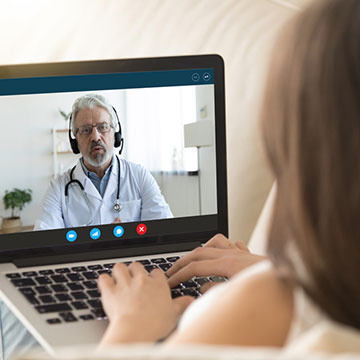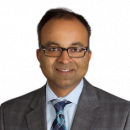What the Adoption of Telemedicine Means for Healthcare in the Future

In the years to come, we may look back on the COVID-19 pandemic as the tipping point in the global adoption of telemedicine. As the threat of contracting the novel coronavirus keeps most patients at home, providers like ChenMed have adapted, keeping in touch via phone and video through telemedicine. Despite assumed (and in some cases actual) downsides associated with telemedicine — the necessity of touch in all forms of health care, the lack of reimbursement by government and insurers, and the inconsistent access to technology among patients — in our experience, telemedicine has made a critical impact in our ability to keep our patients happy, healthy and out of the ED. Over and over again, our patients have told us how much they appreciate the convenience and reassurance of being able to meet and talk with us from the comfort of their own living rooms during this difficult and dangerous time.
Does this mean all medical care should go virtual after the pandemic ends? Certainly not. The physician-patient relationship is a very important one and relationships are difficult to build in a virtual-only setting. Also, there are many interactions and procedures that cannot be replicated from a distance — testing for strep throat, for one, or setting a broken hip. But other health concerns can be very effectively handled through telephone or video appointments. Take routine post-surgical follow-up visits: If the appointment’s sole purpose is to ask patients questions, but patients otherwise feels fine, why do they need to come in? Another example is an urgent care visit for gastrointestinal distress: Couldn’t a consultation by phone with advice to pick up some over-the-counter medication achieve the same result as an in-person visit?
Of course, while telemedicine promises to save time, increase access and convenience, and in many cases, reduce costs, it also comes with concerns. Doctor-patient relationships could be reduced to little more than transactions, reducing the interpersonal benefits some patients — particularly seniors — derive from appointments. Telemedicine platforms must be HIPAA compliant and extensive care must be taken to protect patients’ personal information. Procedures must be developed to ensure that information gained during telemedicine visits is properly updated in a patient’s electronic medical record so that providers can access a full picture of their health history before taking any action. These are challenging issues, to be sure. But they are solvable through the adoption of industry-wide standards and robust training.
At ChenMed, we’re well prepared to succeed in telemedicine because of our track record of providing high-quality, face-to-face primary care. Before COVID-19 struck, about 98 percent of ChenMed visits were in-person appointments. We see our patients often — usually monthly — so we know them well and there’s a strong element of trust in these relationships. Therefore, when the pandemic began and we decided to move more than 90 percent of our appointments to telemedicine, our patients felt comfortable with the change. We ensured that the same physician team that saw patients in person reached out to them by phone, computer, or mobile device. Our patients’ outcomes — in relation to COVID-19 but also the many other chronic conditions they face — have been largely positive even though we have not been able to see many of them in person since the onset of the pandemic.
It’s worth mentioning that a big reason ChenMed has been successful in quickly transitioning to telemedicine during this pandemic is because we operate on a capitation model. We’re paid up front, so we’ve not experienced the precipitous drop in revenue that fee-for-service providers have faced in the COVID-19 crisis. Instead, we’re focused on the future, investing in video platforms that can provide the kind of high-touch virtual care we want to give to our patients. We’re thinking about how the ability to check in more often with more patients could create a supercharged version of preventive medicine: In addition to seeing many patients for a monthly, in-person checkup, why not also connect with some patients once a week online? How could that higher frequency improve outcomes for patients struggling with diabetes, obesity, high blood pressure, and other chronic conditions? Can telehealth actually help us improve our outcomes and our reach?
We believe this is just the first step in the systematic adoption of telemedicine in American health care and — like everything in our industry — it’s probably going to take several years to fully flesh out. Other steps need to be taken for telemedicine to truly take off in the post-COVID-19 environment. Remote monitoring tools (like glucose monitors and apps that connect with blood pressure cuffs) must continue improving. Regulations that restrict providers from giving patients devices such as smartphones need to be re-examined so that more people (especially those from low-income backgrounds) have the ability to connect virtually with their providers. Finally, providers need to approach telemedicine not as a totally new frontier but rather an extension of existing patient-provider relationships.
At ChenMed, we’re confident that this direction is the right one for our practices and our patients. And in the years to come, we’ll remember the dark days of this pandemic as a forceful push into modern medicine’s next chapter.
Find out how ChenMed addressed its commitment to the doctor-patient relationship and preventive care during COVID-19. Then learn how ChenMed physicians put passion back into their practice.




